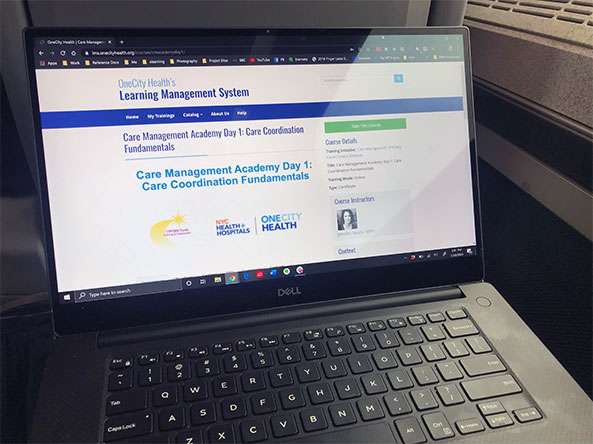Within any organization or industry, all training and learning requirements are constantly evolving. In order to accommodate these training and learning requirements, it is crucial that organizations use a customized learning management system (LMS). Think about the training needs your organization has… chances are, they are different than those of other businesses, even within the same industry. Unlike an out-of-the-box LMS, custom learning management systems allow you to address these issues and optimize your online training platform, specifically for your needs. Customization can also help an LMS reflect the company’s branding.
This blog will highlight the advantages and benefits of customizing an LMS for administrators, learners, and organizations as a whole.
Benefits for Learners:
- Access to Different Training Resources
According to commlabindia.com, the corporate industry is continuing to show growing interest in mobile and video-based learning. As LMS’ of today are trying to play catch-up with industry requirements, it is evident that they are not simply limited to hosting eLearning modules. Customized LMS’ offer far more incentives than those that are out-of-the-box, because they effectively integrate different types of training resources alongside eLearning. Learners can now have access not only to the usual formal training through their LMS, but to other training resources such as videos, podcasts, interactive PDFs, and eBooks. In addition, most modern and customized learning management systems are also now gamified. This is done through awarding points and badges when completing certain activities, to letter boards tracking and displaying progress – all of which are integrated into the platform.
- Increased Social Communication
Social learning and various collaboration tools have confirmed improvement of overall learner engagement and knowledge retention. A customized LMS has the ability to offer the following channels for better socialization and communication among learners:
- Live-chat functionality: to better connect with peers and colleagues
- Discussion groups: to share ideas
- Social media integration: such as Twitter and Facebook widgets for learners to share their progress and achievements
- Gamification: badges and achievements to create a healthy competition among peers for better performance
3) Visual Dashboards of Training Activities
Visual dashboards on an LMS interface are an ingenious way of conveying the most important and relevant information. An effective LMS is one that not only lets users access training resources, but also keep an eye on their performance.
By using dashboards, administrators can allow learners to be aware of their learning and training progress every time they log onto the LMS. Customizing your LMS like this creates a more learner-centric platform, and not just a passive warehouse for storing learning material. A dashboard can also display important information such as announcements, training schedules, surveys, polls, and responses.
4) 24/7 Access to Learning Resources
A customized LMS changes everything for the learner – all for the better. ELearning courses hosted on an effectively deployed learning management system can be accessed by employees that are spread across geographies, without affecting the quality or consistency of the training.
“Most modern LMSs are responsive i.e., they are device-agnostic, and offer seamless, flexible learning experiences on any device. This flexibility in-turn reduces dependency on a single mode of learning (i.e., desktop learning), and grants learners 24/7 access to the learning resources on multiple devices, whenever and wherever they need it” (commlabindia.com).
Benefits for Administrators:
- Bulk Course Uploads
The advantages of a customized learning management system vary for administrators. Adding 4-5 users to the LMS may not be very difficult, but imagine the effort in uploading hundreds. To add to the difficulty, users belong to different departments in a company, which means that different courses need to be uploaded. This is an extremely tedious job, but one that can be easily solved using a customized LMS.
A customized LMS will provide administrators with the option to bulk upload users, their respective courses, and resources with just a few clicks. For example, an LMS administrator can easily import e-learning courses in bulk using a CSV (comma separated values) file authored in either SCORM, Tin Can, or AICC format. Imagine if there are 100 e-learning courses to be hosted on the LMS platform. A single CSV file allows the administrator to upload all of the 100 SCORM-based courses at a time, saving valuable time.
- Assign Custom User Roles with Customized Access
In using a customized LMS, administrators can easily assign custom roles and custom learning access to these roles. Otherwise, they would be confined to the default LMS user roles that out-of-the-box LMSs provide. Administrators can control the types of activities users are allowed to perform. For example, custom roles such as learner, trainer, assistant, LMS administrator, and training manager can all be created with their own custom access.
- Send Customized Emails
Consider an organization that plans to transmit training to 500 employees, and wishes to let the users know about their enrollment. It would be laborious to send individual emails to all of the 500 employees. But the LMS can be customized in such a way that whenever an administrator assigns a course to a particular user or bulk of users, the course enrollment email will be automatically sent to all 500 employees without hardly any trouble or time.
- Create Customized Reports to Calculate Training ROI
Generating customized reports is the most critical feature of an LMS. Reports such as learner activity/progress, course overview reports, user course completion reports, assessments/grades reports, course access time logs, and certificate tracking give the administrator the power to constantly improve the online training strategy and personalize online training initiatives. A customized LMS can help generate custom reports, based on the need or requirement.
Benefits for Organizations:
- Reduce Costs on Training Administration and Delivery
Having a single, centralized place that stores and delivers training to employees, no matter what geographical location they are stationed at, is a huge benefit for organizations in terms of cost-effectiveness. It helps cut down administrative exertion by allocating training resources, thereby allowing organizations to greatly save on administrative and delivery costs.
- Using the LMS as a Powerful Evaluation Tool
As discussed above, a custom LMS can generate different types of reports that provide organizations analytical data based on the learner statistics, which in turn helps in estimating the training program’s overall effectiveness. LMS reports can be powerful evaluation tools, allowing companies to make crucial decisions such as evaluating whether training delivery is meeting its objectives, what content is working with the learners, the duration of the course, and many others.
A learning management system is an extremely powerful software application that allows organizations to take control of every aspect related to their training processes – from administering and publishing eLearning courses, to tracking and reporting learner activity. A truly customized LMS establishes a close integration with your training strategy, tailored to your specific training needs. When choosing an LMS, make sure that it supports not only the features that you need, but also supplies you with instinctive administrative options to enhance training capabilities. Reach out to us today to learn how HWNY can help you create your own custom LMS.







